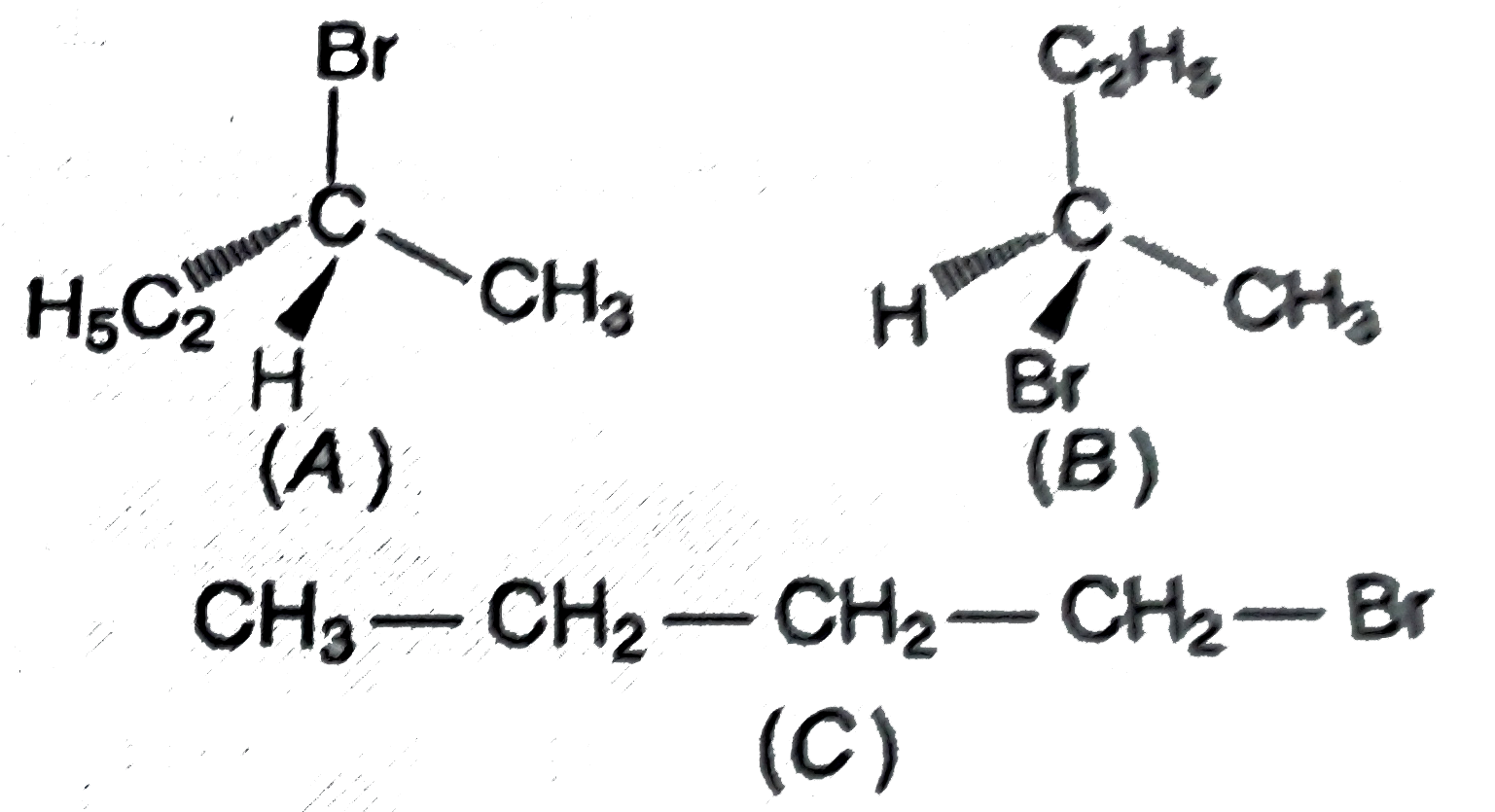Addition of Br2 to trans-2-butene would give a product which is
achiral
racemic
meso
optically active
The correct Answer is:C
To solve the question regarding the addition of Br2 to trans-2-butene, we will follow these steps:
Step 1: Draw the structure of trans-2-butene
Trans-2-butene has the following structure:
CH3−CH=CH−CH3
In this structure, the two methyl groups (CH3) are on opposite sides of the double bond, which is characteristic of the trans isomer.
Step 2: Understand the addition reaction
When bromine (Br2) is added to alkenes, it typically undergoes an electrophilic addition reaction. In the case of trans-2-butene, the addition of bromine occurs via an anti-addition mechanism. This means that the bromine atoms will add to opposite sides of the double bond.
Step 3: Draw the bromonium ion intermediate
During the reaction, a bromonium ion is formed as an intermediate. This ion is a cyclic structure where one bromine atom is bonded to one of the carbons in the double bond, creating a positive charge on the other carbon.
Step 4: Complete the addition of bromine
The second bromine atom will then attack the bromonium ion from the opposite side (anti-addition), leading to the formation of a dibromide product. The product formed from trans-2-butene will have the following structure:
CH3−CHBr−CHBr−CH3
Step 5: Analyze the symmetry of the product
The final product is a meso compound because it has a plane of symmetry. The two bromine atoms are added to the same side of the molecule, but since the original alkene was trans, the resulting compound will have a mirror plane dividing the molecule into two symmetrical halves.
Step 6: Conclusion
The product of the addition of Br2 to trans-2-butene is a meso compound.
Final Answer
The correct answer is that the product is meso.
---
Trans-2-butene has the following structure:
When bromine (Br2) is added to alkenes, it typically undergoes an electrophilic addition reaction. In the case of trans-2-butene, the addition of bromine occurs via an anti-addition mechanism. This means that the bromine atoms will add to opposite sides of the double bond.
During the reaction, a bromonium ion is formed as an intermediate. This ion is a cyclic structure where one bromine atom is bonded to one of the carbons in the double bond, creating a positive charge on the other carbon.
The second bromine atom will then attack the bromonium ion from the opposite side (anti-addition), leading to the formation of a dibromide product. The product formed from trans-2-butene will have the following structure:
The final product is a meso compound because it has a plane of symmetry. The two bromine atoms are added to the same side of the molecule, but since the original alkene was trans, the resulting compound will have a mirror plane dividing the molecule into two symmetrical halves.
The product of the addition of Br2 to trans-2-butene is a meso compound.
The correct answer is that the product is meso.
Similar Questions
Knowledge Check
Addition of Br2 to cis-2-butene would give a product which is:
AachiralBracemicCmesoDoptically activeAddition of BH3 followed by H2O2 to trans-2-butene would give a product which is:
AachiralBracemicCmesoDoptically activeAddition of OsO4 to cyclopentene would give a product which is:
AachiralBracemicCmesoDoptically active
A) Addition of HBr on 2-butene gives two isomeric products.
R) Addition of HBr on 2-butene follows Markownikoff's rule.
View Solutionstatement I: Addition of Br2 to 1-butene gives two optical isomers.
statement II: The product contains one asymmetric carbon atoms.
View SolutionThe addition of HBr of 1-butene gives a mixture of products A,B and C

(C) CH3−CH2−CH2−CH2−Br
The mixture consists of
View SolutionDehydration of 1-butanol gives 2-butane as a major product, by which of the following intermediate the compound 2-butene obtained.
View SolutionStatement-I : Addition of HBr to 1−butene gives two optical isomers.
Because
Statement-II : The product contains one asymmetric carbon.
View Solution
